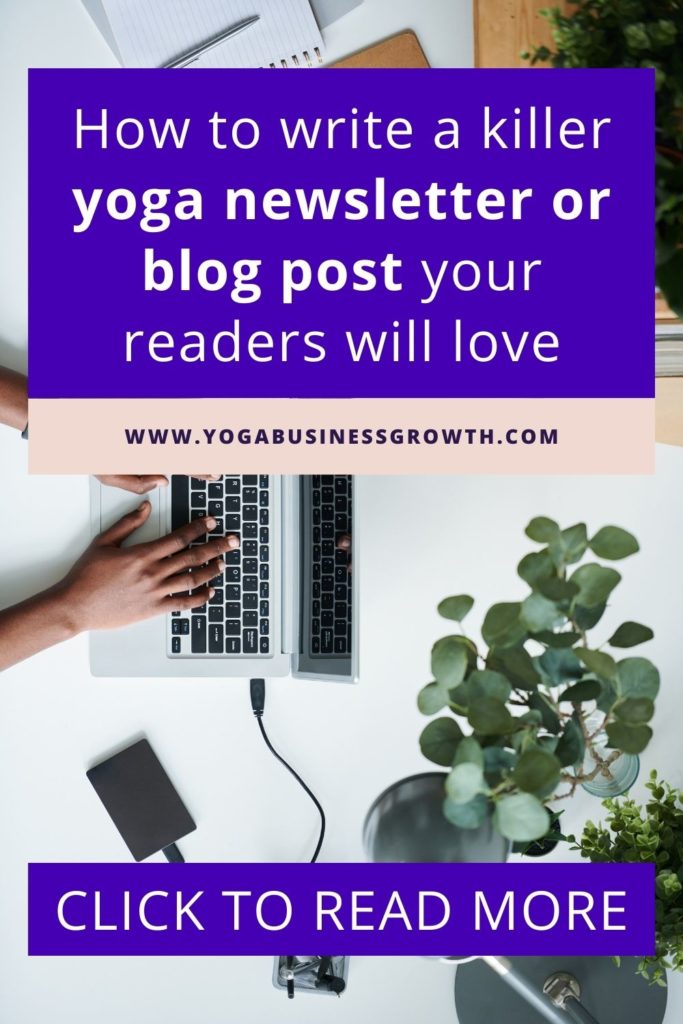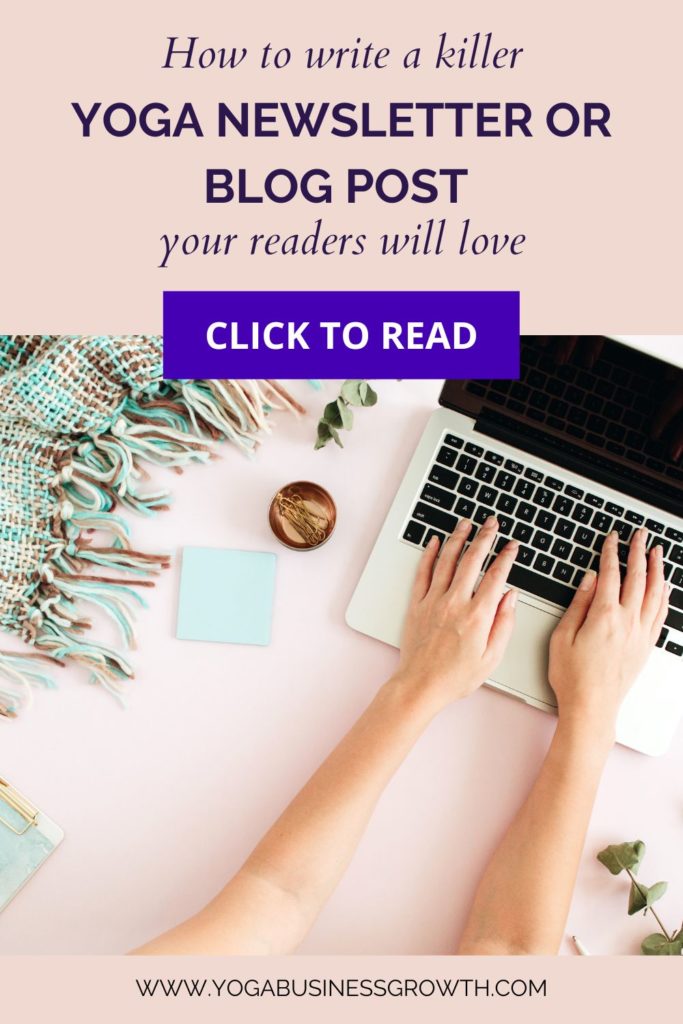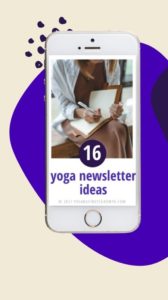Don’t know where to start to write a killer blog post or newsletter that gets stellar open rates? That gets people replying to you to tell you that it was like you were in their head? Here are some tips for when you’re facing the dreaded white page. Writer’s block is no joke, but you can overcome it!

1. What is the goal of your newsletter or blog post?
Decide FIRST what the goal is of your newsletter (or blog post). Why are you writing it? (and no, “because I have to” or “because I should write weekly” are not good enough answers). Are you providing value, entertaining or selling something? It can be a combination of these things too!
Providing value can be teaching something, or offering something for free. Entertaining can be talking about your recent travels, kids/family life, or the latest antics of your pet 🐶🐱🦜…
And selling is just offering something your audience needs that you happen to be the creator of, and you deserve to be paid for that!
2. Outline your newsletter
By putting the headings in place, you can structure your copy, and it gets easier to write the paragraph (or two) that goes with that heading.
You don’t want to write more than 2 paragraphs per section – after all, you’re not writing a book! So as soon as you have the headings in place, it gets easier to write the rest.
For instance, a newsletter where you talk about child’s pose could include these sections:
- how to get into child’s pose
- variations of child’s pose
- anatomy of child’s pose
- benefits of child’s pose
- contra-indications of child’s pose
- which poses go well with child’s pose (a mini sequence)
See how easy it is now to start writing?
3. Write a blog post or newsletter as if you’re writing to your bestie
I’m serious. The way you talk to your bestie, that’s your voice. That’s the most natural way for you to be. If you try to sound differently than you are (funnier, smarter, or whatever you want to come across as), it’ll show in your copy and it will be very hard to maintain that same tone of voice in all your publications.
You want YOUR people to connect with you. The real you. Yes, you should absolutely show some professionalism and check your spelling and grammar, but the voice should be yours and yours alone. There’s no one like you!
4. Don’t get hung up on getting it perfect.
Your copy will never be perfect. And you know what, it doesn’t have to be. If you have 8 emails or blog posts sitting in your drafts, that are 8 chances you missed to connect with your audience, your students!
Set yourself deadlines. This could look like setting a timer for your writing. eg you get 1 hour to write the first draft, and 30 minutes to do the editing. And stick to that!
I have a coffee mug that says: “Done is better than perfect.” And it took me months (or more honestly, maybe years) of daily use of the thing to finally start embodying it. There are layers to it too. I’ve let go of perfectionism for my writing and graphic and website design, but still working on getting comfortable with posting imperfect videos of myself!

5. Edit your draft the next day
When you’re just starting out with writing blog posts or newsletters, you’ll want to sleep a night on it before you edit and send it. You’ll always remember points you wanted to make or a better way to phrase things AFTER you’ve finished the first draft 😱. So if you send it or press publish straight away, you’re usually going to regret it (and maybe triggering a bout of perfectionism when you draft the next one!)
When you get more experienced writing, you can probably do your edits straight after you finished your first draft. I still put on different hats when I do: one when I’m writing, and another one when I’m editing. They are different skillsets!
6. Write your subject or headline LAST
This may seem counterintuitive, but a headline or subject line is supposed to grab the attention of the reader. Writing headlines is an art in itself! You absolutely want to decide on what you want to bring across with your newsletter or blog article (see point 1), but that’s not the goal of your headline.
You can work with a “working title” while you write your blog post. The perfect headline or subject line will come much more easily to you AFTER you’ve written your email or blog post. Trust me.
I hope you found these tips useful!
Read more: how to write the perfect yoga welcome email sequence
If you want to have an experienced set of eyes looking at your copy, especially if you’ve written a sales page or a sales email sequence, consider booking a copy audit with me. More info here.

